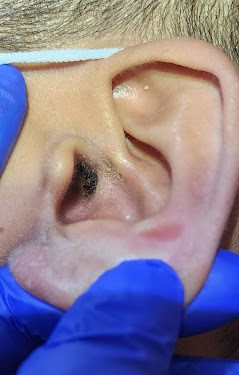Earwax issues can pose for some people. In this blog, your ENT doctor in Palawan will share valuable insights and proven techniques to address earwax concerns effectively. From safe removal methods to proactive strategies, read on real solutions for ear health.
What is Earwax?
Earwax, scientifically known as cerumen, is a natural substance produced by the glands in the ear canal. It serves a crucial role in protecting the ears by trapping dust, debris, and preventing infection. Normally, earwax has a light amber color and a soft, pliable consistency. Contrary to popular belief that you should clean your ears, the ear typically self-cleans; and the wax should naturally migrate out of the ear, aided by jaw movements like talking and chewing. Embracing this natural cleansing process contributes to maintaining healthy and naturally balanced ear hygiene.

Common Causes of Impacted Earwax
Several factors contribute to impacted earwax. Certain health conditions, like eczema, can lead to excessive wax production due to skin inflammation in the ear canal. Individuals with naturally small ear canals may face a higher risk, as they are more prone to wax accumulation. Regular and excessive use of cotton swabs, despite being a common practice, can push the wax deeper, inadvertently causing blockages. Ear infections, whether chronic or recurrent, can disrupt the natural wax expulsion process, contributing to impaction. Injuries, such as trauma to the ear, may stimulate the glands to produce more wax than usual, leading to earwax blockages. Additionally, bony blockages or anatomical variations can create spaces where wax easily builds up, increasing the likelihood of impacted earwax.
Signs and Symptoms of Impacted Earwax
Recognizing the signs of impacted earwax is essential for timely intervention. Persistent hearing loss, often described as a muffled or reduced ability to hear, may happen. The sensation of fullness in the ear, accompanied by persistent itchiness, may also signal wax blockage. Ringing in the ears, known as tinnitus, may also be felt. Impacted earwax may also affect equilibrium resulting in a sense of imbalance or dizziness. Importantly, if left untreated, impacted wax can escalate into more severe complications such as ear infections, characterized by pain, discharge, and potential damage to the ear canal. Prompt attention to these signs ensures a proactive approach to maintaining optimal ear health.
Treatment and Prevention of Impacted Earwax
If you think you have impacted earwax, seeking the expertise of an ENT (Ear, Nose, and Throat) specialist is needed. An ENT doctor near you can provide a personalized assessment, in order to determine the most effective treatment plan for your case. ENT doctors may employ procedures such as ear irrigation or manual removal using specialized tools to safely and efficiently clear impacted wax. Equally important in managing earwax issues is refraining from attempting to clean your ears with cotton swabs, as this can push the earwax deeper, making the problem worse. For individuals with risk factors predisposing them to impacted earwax, regular check-ups with an ENT doctor near you become an integral part of proactive ear care. Embracing these measures not only treats existing issues but also acts as a preventive strategy, promoting long-term ear health.
